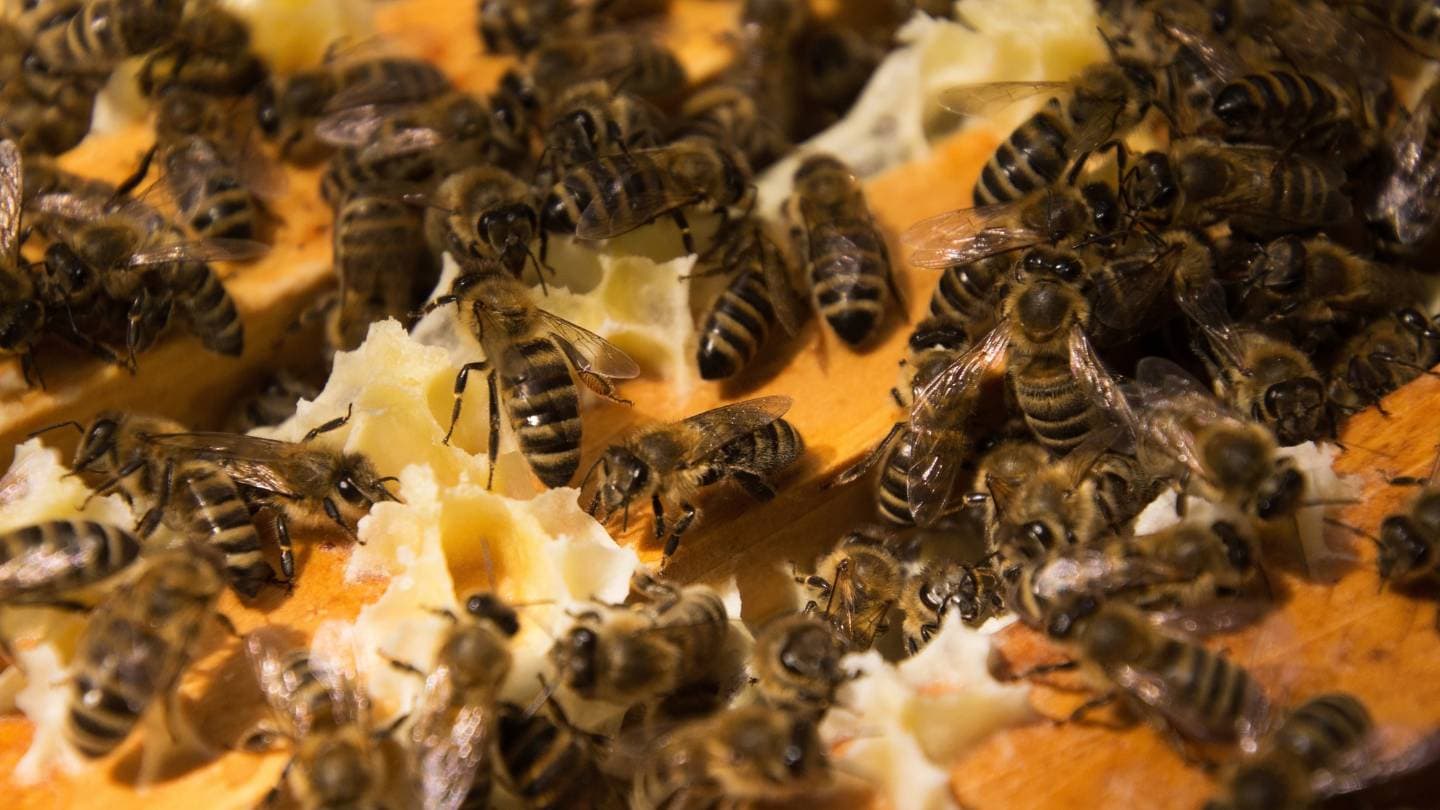Haven’t you ever been amazed by the busy buzz of a healthy bee colony and wondered how they remain so resistant to pests?
What are the signs that indicate a hive is strong enough to fend off these invaders, ensuring the well-being of these critical pollinators?
It’s fascinating to explore how a colony operates, but understanding these signs is crucial for maintaining balance in our ecosystems, especially in Australia, where bees play a vital role in the environment.
A thriving beehive exhibits extraordinary characteristics when it comes to pest resistance.
From grooming behaviours that reduce mite infestations to efficient hive ventilation that deters unwanted visitors, these signs offer insight into how bees manage to protect themselves.
In this article, we’ll explore the remarkable signs that a bee colony is healthy and resilient against pests.
By understanding these indicators, you’ll gain a deeper appreciation of how these small creatures contribute to ecological balance while fending off threats to their survival.
Let’s get straight to the point
A healthy bee colony shows strong pest resistance through several key signs: grooming behaviours that reduce mite infestations, efficient hive ventilation, and a strong population of worker bees.
Common pests affecting Australian hives include small hive beetles, ants, wax moths, and mice.
Indicators of a healthy colony include a thriving queen, abundant honey and pollen stores, consistent brood patterns, and the absence of visible pests.
Beekeepers can maintain pest resistance by choosing the right hive location, providing diverse forage, inspecting regularly, keeping the hive clean, and employing integrated pest management strategies.

Major Insects Impacting Bee Colonies
In the natural world, preventing bees from being attacked by pests is a constant challenge for beekeepers. Several pests can impact bee colonies, causing significant damage if left unchecked.
Below, we’ve compiled a list of the most common beehive pests that Australian beekeepers encounter, along with the damage they can inflict and how to spot them.
Common Beehive Pests
Small Hive Beetle
The small hive beetle is a common pest in Australia, particularly in warmer regions such as Queensland and New South Wales.
These small, brown, and black insects can cause major damage to honey bee hives by feeding on the bees’ brood, honey, and pollen.
Their larvae are especially destructive, capable of ruining honeycombs. Hive beetles are a persistent issue in many parts of Australia, including cooler areas like Victoria.
Ants
Ants can be a nuisance in beehives, particularly larger species that are capable of stealing honey or even killing bees.
While small black ants may live in the hive without causing much trouble, larger ants can do serious damage.
Beekeepers can prevent this by placing hives on stands and applying grease or oil to prevent ants from climbing. Always be cautious when using chemicals, as they can harm bees.
Wax Moth
The wax moth is a serious pest that can devastate a weakened colony. There are two types, the greater and lesser wax moths, both of which consume beeswax, honey, and other hive materials.
If a wax moth infestation is present, it often indicates other issues with the hive’s health. Regular inspections are key to preventing this pest from taking hold.
Braula Fly
Also known as the bee louse, the Braula fly is a small, wingless insect that lives in honey bee hives. It has mostly been found in Tasmania.
While a minor pest, heavy infestations can impact the queen’s ability to lay eggs, and they can destroy honeycombs.
Mice
Mice may seek shelter in hives, particularly during the colder months, and cause significant damage.
They’ll eat honey pollen and even destroy combs to make room for their nests. Keep entrances small to prevent these pests from entering the hive.
Signs of a Healthy Bee Colony’s Pest Resistance
A robust honey bee colony is more likely to resist pest infestations and other stressors. Beekeepers must be familiar with the signs of a healthy hive to detect any issues early.
Healthy Queen Bee
A strong queen bee is essential for a healthy hive. Her pheromones regulate the behaviour of worker bees and signal that she’s healthy and fertile.
If a queen is thriving, the colony will be productive, and worker bees will be more diligent in defending the hive from pests.
Regularly check for signs of a healthy queen, such as steady egg-laying and the production of a new brood.
High Population of Worker Bees
A large, thriving population of worker bees is a key indicator of a healthy colony. Worker bees are responsible for foraging, protecting the hive, and nurturing the brood.
If your hive has a healthy population, it will be better equipped to fight off pests and prevent infestations from taking hold.
Abundant Honey and Pollen Stores
Bees rely on honey and pollen for nutrition, so a healthy colony will have plenty of stored food.
This is also a sign that foragers are successfully collecting resources, which means the colony has the energy to ward off pests.
A colony with adequate honey and pollen is likely to thrive through the winter and resist stress from parasites.
Consistent Brood Pattern
A consistent brood pattern indicates a strong queen bee and a healthy colony. Look for clusters of capped brood cells, which should be uniform in appearance.
Any signs of uncapped or irregular brood cells may indicate that workers have removed sick larvae, possibly due to pest infestations or diseases.
Absence of Pests
Perhaps the most obvious sign of a healthy, pest-resistant hive is the absence of visible pests like Varroa mites, wax moths, or small hive beetles.
Regular inspections will help you catch early signs of an infestation. However, the presence of some pests doesn’t always mean your hive is in danger, as bees can handle low levels of infestation without issue.

Tips for Maintaining a Pest-Resistant Bee Colony
Keeping a bee colony healthy and pest-resistant requires diligent care and preventive measures. Here are some tips to ensure your hive remains in top condition.
Choose the Right Location
Selecting the right location for your hive is crucial. The hive should be placed in a sunny spot with some afternoon shade, away from strong winds. This helps bees regulate temperature and reduces the chance of pests.
Provide Diverse Forage
Bees need a variety of forage to maintain their health. Plant a range of flowers, herbs, and trees around the hive to ensure bees have access to diverse nectar and pollen sources. This strengthens their immune systems, making them more resistant to pests.
Inspect Regularly
Regular hive inspections are essential. During the warmer months, inspect your hive every three to four weeks to check for signs of pests, diseases, or other issues. Early detection is key to preventing problems from escalating.
Keep the Hive Clean
Hive cleanliness is important for pest resistance. Scrape excess wax, propolis, and debris from the frames and equipment. Replace old or damaged equipment to prevent a buildup of harmful bacteria or pests.
Implement Pest Management Strategies
Using Integrated Pest Management (IPM) strategies can help control pests without relying heavily on chemicals. This includes monitoring pest levels, using natural predators, and introducing treatments only when necessary.
Improve Hive Ventilation
Proper ventilation is key to preventing moisture buildup, which can lead to mould and weaken the hive. Bees can better control humidity and temperature when air circulation is adequate.
Prevent Swarming
Swarming is a natural process, but it can weaken a hive. By managing space within the hive and adding supers during the nectar flow, you can help prevent swarming, which reduces stress on the colony.
Conclusion
A healthy bee colony not only ensures the production of honey but also plays a critical role in protecting pollinators and maintaining ecological balance.
Understanding the signs of pest resistance, from a strong queen to the absence of pests, can help beekeepers keep their colonies thriving.
By implementing good practices such as regular inspections, ensuring proper ventilation, and managing pests effectively, you can maintain a pest-resistant, healthy bee colony that contributes positively to Australia’s environment.
Frequently Asked Questions
How Can I Ensure My Bee Colony Stays Healthy?
To maintain a healthy bee colony, focus on providing a balanced diet of nectar and pollen, regularly inspecting the hive for signs of diseases, and keeping the hive clean.
Regular monitoring and addressing issues promptly will contribute to the colony’s well-being.
What Are Common Signs Of A Healthy Bee Colony?
Healthy bee colonies exhibit active foraging, consistent egg-laying patterns by the queen, and a calm temperament.
Look for a strong population, well-organized comb structure, and minimal signs of pests or diseases as indicators of a thriving hive.
How Can I Prevent Diseases In My Bee Colony?
Disease prevention involves maintaining good hive hygiene, regularly cleaning equipment, and minimising stress factors.
Providing a well-ventilated hive, practising responsible beekeeping techniques, and ensuring a diverse foraging environment are essential in preventing diseases.
What Role Does The Queen Bee Play In Colony Health?
The queen bee is crucial for colony health as she lays eggs, ensuring the population’s growth. A healthy queen produces a robust and genetically diverse workforce.
Regularly checking the queen’s condition and replacing her if necessary contributes to the overall health of the colony.
How Can I Support My Bee Colony During Winter?
Winter preparation is vital for a healthy bee colony. Ensure they have enough honey stores, provide insulation for the hive, and reduce disturbances during cold months.
Monitoring food levels and protecting the hive from harsh weather conditions will help the colony survive and emerge strong in the spring.

